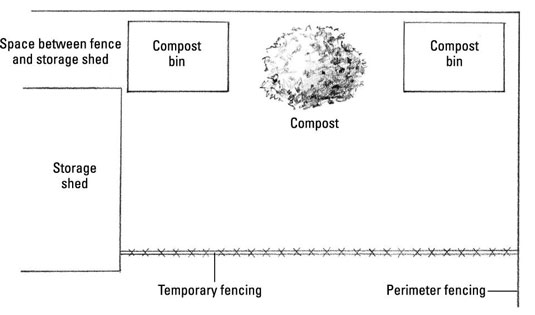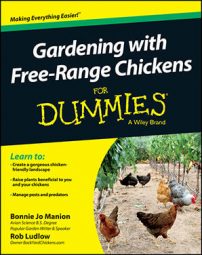Not everyone raises chickens in a chicken garden or a garden landscape environment. You may have small farms, acreage, and pasture to free-range your chickens. In fact, pasturing poultry at the turn of the 20th century was the prevalent method of raising poultry.
Pastures are the exact opposite of a well-layered landscape, which has an abundance of garden structure. A pasture has very little structure in place. Generally speaking, a pasture is open land with possible low contour hills or undulating landscape.
Pastures can have a few landscape elements such as an occasional shade tree, a row of trees for windbreak, and even living barrier hedges. Like a well-layered landscape, however, a pasture can provide chickens food for forage while they free-range in plant material, bugs, larvae, and worms.
Pastures can also be planted for chickens in corn, wheat, rye, oats, and barley. These types of grains can be harvested, threshed, and stored for chickens at a later time, or chickens can be allowed to pasture these crops.
Pastures can also be planted in cover crops for chickens such as alfalfa, clover, annual rye, kale, rape, mustard, and buckwheat. Once again, these cover crops can be cut and brought to chickens, or chickens can be allowed access to free-range them.
Many greens for chickens can be planted in pastures such as lettuces, dock (also called sorrel), cowpeas, mustards, clover, sorghum, chicory, and dandelions.
Protection, shelter, and food are just as important in an open environment (like a pasture) as they are in a well-layered landscape. Here are some factors to consider:
Protection: Protection is critical with perimeter fencing and temporary fencing if you’re rotating your flock frequently. Rural open areas mean even more vulnerability to hungry predators.
Shelter: Pastures have less layering of trees and shrubs than gardens do. A shelter is necessary for providing protection from the sun, heat, rain, and other elements of weather. Chickens still need a quiet, sheltered place to lay their eggs and have access to a fresh water source.

Food: Proper food in a pastured environment is important to consider. Chickens have different digestive systems than ruminants like cattle and sheep and therefore can’t break down grass as easily. Grass alone provides little nutrition for chickens when compared to other food sources, although it is a great source of Omega-3s
Hens who eat a diet rich in Omega-3 fatty acids naturally transfer this goodness to their eggs. If you eat foods like Omega-3 rich eggs, it can promote overall good health and may be instrumental in preventing cardiovascular disease.
Chickens may appear to be eating grass, and they will eat some, but they’re looking for seeds and insects, which are part of their natural diet. If you can plant a pasture with a mixture of some combination of the above listed grains, cover crops, and greens, for your chickens the better.
The height of a pasture is important. Chickens forage at a different height than other livestock. Chickens prefer foraging a pasture no higher than three to five inches. When plants are taller than five inches, carbon amounts in their leaves become higher and are also less digestible for chickens. Care must also be taken that pasturing chickens don’t overforage a pasture below two inches, where a pasture can’t regrow and replenish itself.
Chickens require a daily balanced diet to thrive and be productive. Provide a balanced year-round supply of feed to pasturing chickens if you’re pasturing them on a low grass and weed mixture that’s common in pastures.
A good idea is to seed your pasture with cover crops that chickens like — such as white and New Zealand clover, oats, and rye — giving your chickens more food suitable for them to forage. You may want to research seeding your pastures for each season, planting a seasonal pasture for your chickens.
You can find sources for poultry pasture seed online. One is available from Peaceful Valley’s website. Look for their PVFS Omega-3 Chicken Forage Blend, available in sizes from 1 to 1,000 pounds. This blend is made up of a carefully selected blend of alfalfa, buckwheat, clover, flax, millet, rye, and rye grass.

